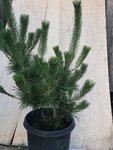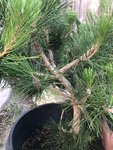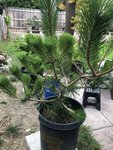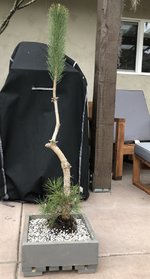Hbhaska
Chumono
I purchased a large JBP from the local nursery at a bargain over the weekend. I’m planning on making this into a large bonsai, chumono/omono, over the period of next several years.
I really like the movement in the main trunk and there are plenty of side/low branches to work with.
The tree is very vigorous and I removed some of the candles right away. I’m planning on pruning undesirable branches, such as the one in red, but because these will be major cuts, I will perform them right before next spring. I plan to develop the thickness of the main trunk and therefore let the leading top branch grow untouched (green line) for a few years. Comments and suggestions please. Thank you
I really like the movement in the main trunk and there are plenty of side/low branches to work with.
The tree is very vigorous and I removed some of the candles right away. I’m planning on pruning undesirable branches, such as the one in red, but because these will be major cuts, I will perform them right before next spring. I plan to develop the thickness of the main trunk and therefore let the leading top branch grow untouched (green line) for a few years. Comments and suggestions please. Thank you










